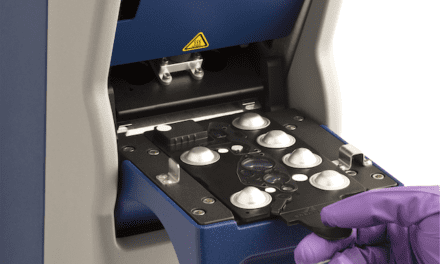Researchers at Aalto University, Finland, have developed a biosensor that is expected to make it possible to create a range of new easy-to-use health tests similar to home pregnancy tests. The plasmonic biosensor can make it possible to detect diseased exosomes even with the naked eye.1
Exosomes, important indicators of health conditions, are cell-derived vesicles that are present in blood and urine. Analysis by plasmonic biosensors can help physicians rapidly recognize cancer, inflammatory bowel disease, and other diseases, so that appropriate treatment can be initiated in a timely fashion.
Researchers created the new biosensor by depositing plasmonic metaparticles on a black, physical body that absorbs all incident electromagnetic radiation. A plasmon is a quantum of plasma oscillation. Based on the effective polarizabilities of metallic nanostructures, plasmonic materials efficiently reflect and absorb light. In scientific tests, plasmonic materials have been used to make objects invisible.
“It is extraordinary that we can detect diseased exosomes by the naked eye,” says Mady Elbahri, PhD, a professor of nanochemistry and nanoengineering at Aalto University. “Conventional plasmonic biosensors are able to detect analytes solely at a molecular level. So far, the naked-eye detection of biosamples has been either rarely considered or unsuccessful.”
Plasmonic dipoles are famous for their strong scattering and absorption of light. The researchers succeeded in demonstrating the previously unknown specular reflection and Brewster effect of ultrafine plasmonic dipoles on a black body host.
“We exploited it as the basis of new design rules to differentiate diseased human serum exosomes from healthy ones in a simple manner, with no need of any specialized equipment,” says Abdou Elsharawy, PhD, a scientist at the University of Kiel.
The novel approach makes possible the simple and cost-effective design of a perfect colored absorber, and the creation of vivid interference plasmonic colors.

Visualizing the specular reflection color by a blackbody substrate. Photo courtesy Aalto University.
According to Elbahri, there is no need to use sophisticated fabrication or patterning methods. The biosensor enables naked-eye environmental and bulk biodetection of samples with a very minor change in molecular polarizability of even 0.001%.
REFERENCE
- Elbahri M, Abdelaziz M, Homaeigohar S, et al. Plasmonic metaparticles on a blackbody create vivid reflective colors for naked-eye environmental and clinical biodetection. Adv Mater. Published online in advance, December 7, 2017; doi: 10.1002/adma.201704442.








